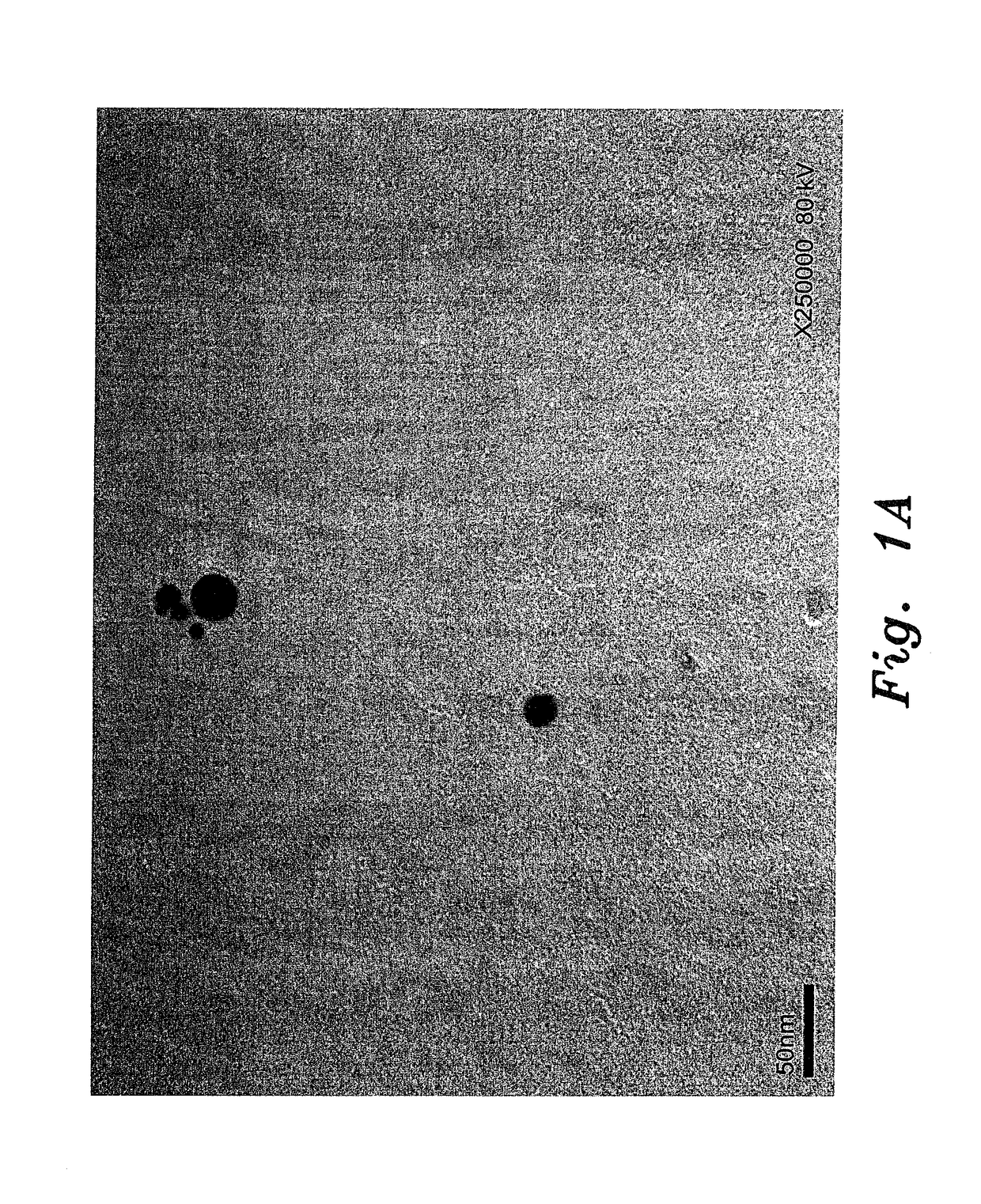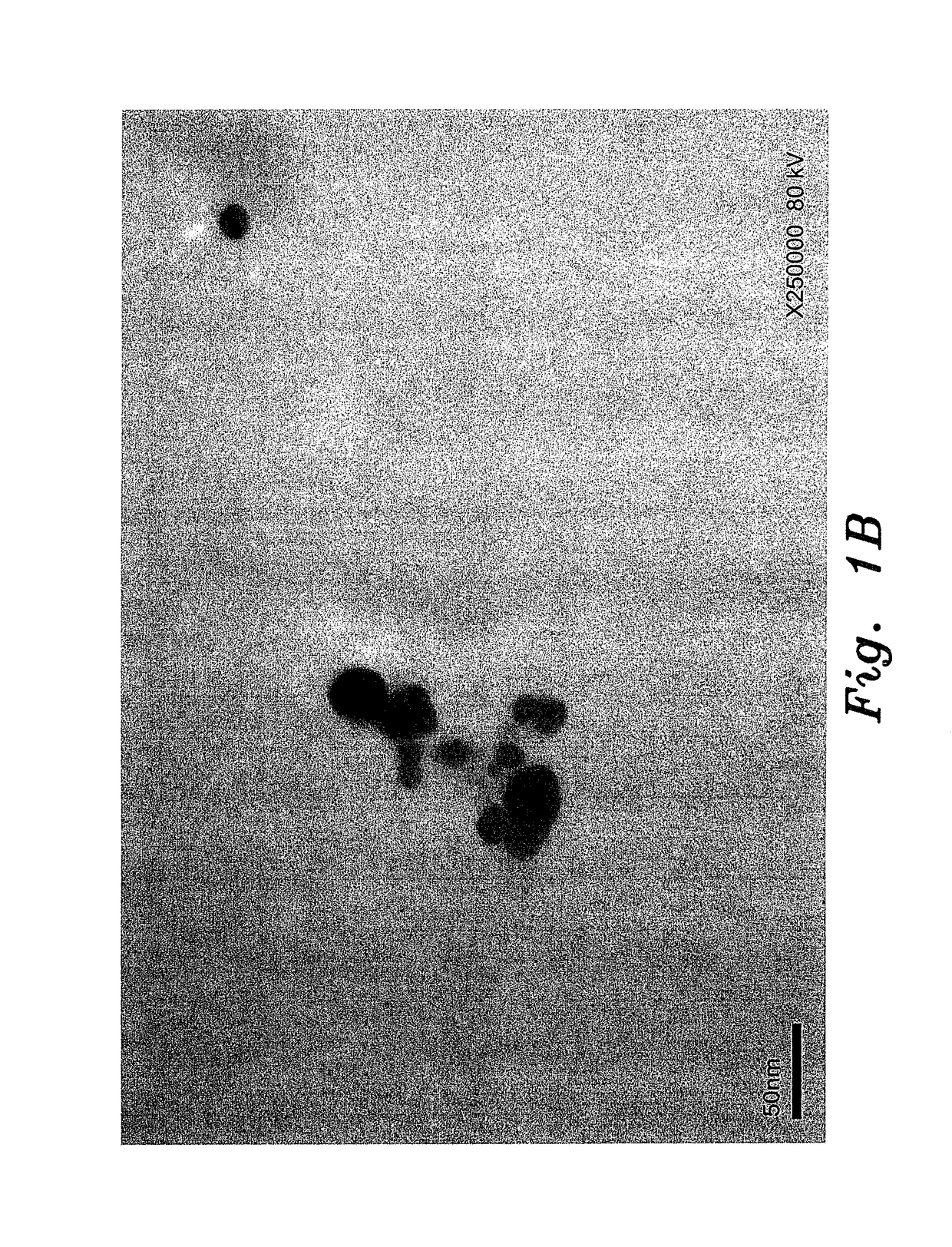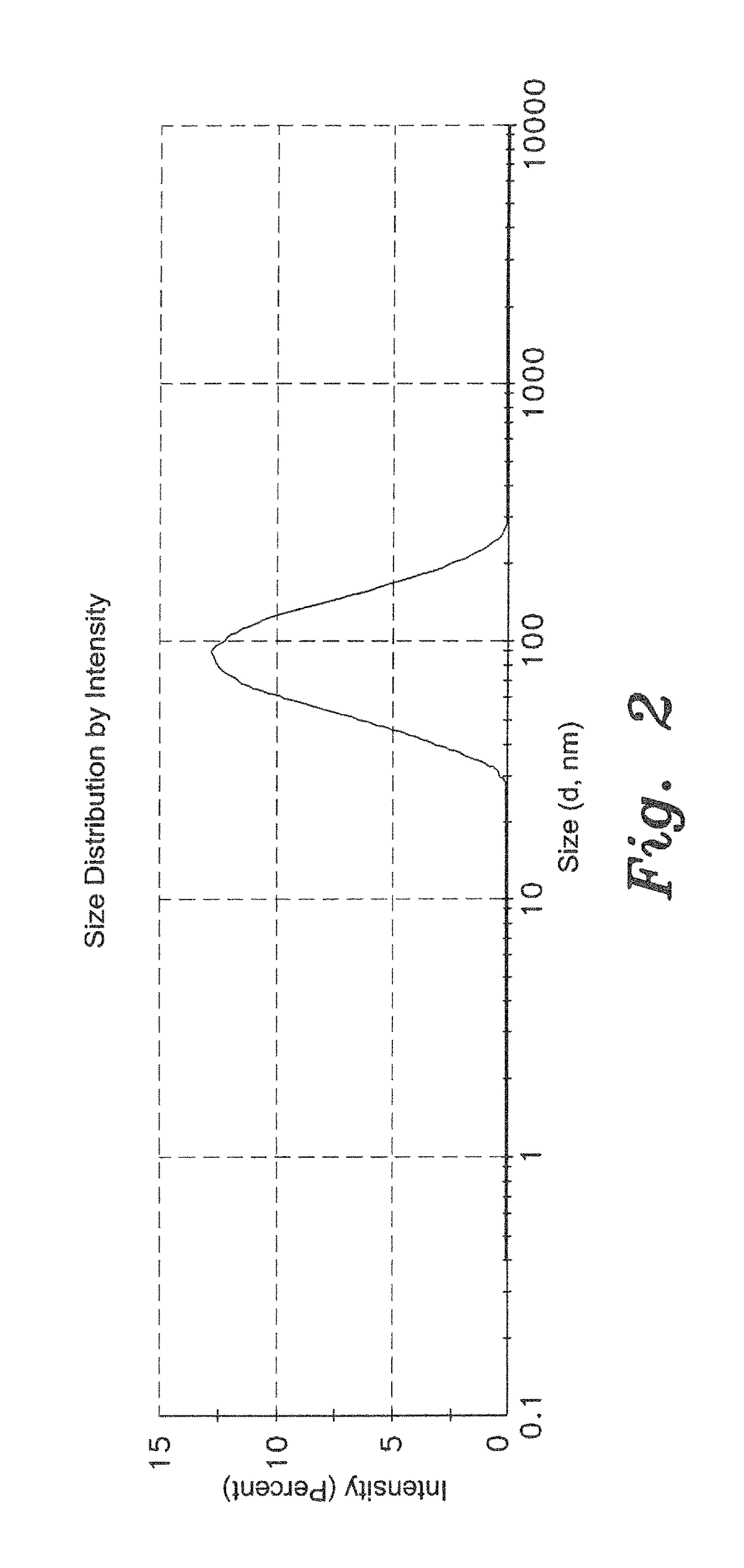Synthesis of metal nanoparticles using an extract of terfeziaceae
a technology of metal nanoparticles and extracts, applied in the directions of transportation and packaging, plant/algae/fungi/lichens ingredients, biocide, etc., can solve problems such as pollution of the environmen
- Summary
- Abstract
- Description
- Claims
- Application Information
AI Technical Summary
Problems solved by technology
Method used
Image
Examples
example 1
Preparing an Aqueous Extract of Desert Truffles (Terfeziaceae)
[0019]Fresh desert truffles (Terfeziaceae) were obtained from local commercial sources in Saud Arabia. About 5 g of Terfeziaceae were washed carefully and thoroughly with double distilled water to remove any dirt particles, and then cut into small pieces. About 50 ml of boiling distilled water was added to the cut pieces in a vessel and then boiled for 1-2 minutes. The mixture was crushed by a mixer, centrifuged for about 7 minutes at about 8000 rpm at room temperature, and then filtered. The resultant filtrate extract of Terfeziaceae was kept in a refrigerator (4° C.) until used. The resultant filtrate extract of Terfeziaceae was used for the reduction of Ag+ to Ag0.
example 2
Synthesis of Silver Nanoparticles
[0020]About 1 mmol / ml silver nitrate (AgNO3) was dissolved in 50 ml of distilled water and stirred vigorously at 90° C. for 5 minutes to provide a silver nitrate solution. Thereafter, about 5 ml of the desert truffles extract (from Example 1) was added to the silver nitrate solution resulting in a color change from colorless to dark brown. The change of color of the solution from colorless to dark brown indicated the reduction of silver ions and the formation of silver nanoparticles. FIGS. 1A and 1B show the transmission electron microscopy (TEM) images of the silver nanoparticles produced by the present method. FIG. 2 shows the particle average size determination by Zetasizer for the silver nanoparticles synthesized according to the present method. A single peak with a diameter of 95.75 nm was found.
example 3
Antimicrobial Activity Study
[0021]The following bacterial strains were used for the trials. Bacillus cereus, Bacillus subtilis, Enterococcus aerogenes, Serratia marcecens, Staphylococcus aureus, Aeromonas hydrophila, Micrococcus luteus, Proteus vulgaris, Salmonella typhimurium, Escherichia coli, Lelerichia sp., and Listeria monocytogenes. The bacterial strains were all obtained from Department of Food Science and Nutrition, College of Food and Agricultural Sciences, King Saud University. The antibacterial activity for the silver nanoparticles was determined by using agar well diffusion method. Bacterial concentrations were prepared for each bacteria in normal Ringlers solution at a concentration of 108 / ml. Then, wells were made in Muller Hinton agar by using a cork borer sized 8 mm in diameter. Plates were cultured by using small swabs of each bacteria. 100 μl of the silver nanoparticles, 100 μl of the desert truffles (Terfeziaceae) extract and 100 μl of methanol as control were eac...
PUM
| Property | Measurement | Unit |
|---|---|---|
| temperature | aaaaa | aaaaa |
| diameter | aaaaa | aaaaa |
| diameter | aaaaa | aaaaa |
Abstract
Description
Claims
Application Information
 Login to View More
Login to View More - R&D
- Intellectual Property
- Life Sciences
- Materials
- Tech Scout
- Unparalleled Data Quality
- Higher Quality Content
- 60% Fewer Hallucinations
Browse by: Latest US Patents, China's latest patents, Technical Efficacy Thesaurus, Application Domain, Technology Topic, Popular Technical Reports.
© 2025 PatSnap. All rights reserved.Legal|Privacy policy|Modern Slavery Act Transparency Statement|Sitemap|About US| Contact US: help@patsnap.com



